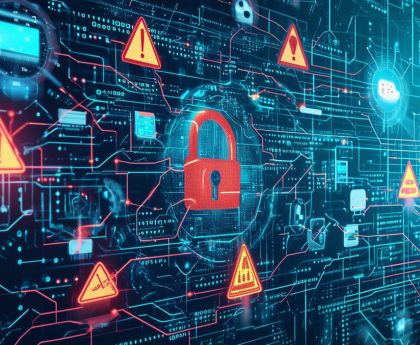Devices of all types are getting smarter and more prevalent in every sphere of life. Connected technologies are becoming a staple in homes, businesses, government institutions, hospitals, and factories.
This growing ability of devices to share data gave birth to the Internet of Things (IoT), a concept that applies to any network-connected device containing computing systems and sensors and transferring data over the Internet.
The number of Internet of Things (IoT) devices is expected to grow to 29 billion by the end of this decade. This expansion will make consumers, governments, and businesses heavily dependent on IoT devices, which requires additional investments in security measures. Several challenges in home security systems and the broader IoT landscape have emerged, and appropriate solutions to tackle cyber threats have been proposed.
Paramount Challenges of IoT Security
Developers focus on improving the transformative power of IoT devices by increasing their efficiency and boosting the customer experience. Something not prioritised in the entire process is curtailing cybersecurity threats that pose a danger to critical infrastructure. The neglect of security measures when designing IoT devices and the fact most people are oblivious to the risks only complicates the depth of the security issues:
- Absent Encryption Systems: The network traffic from IoT devices is generally unencrypted. This situation increases pathways for data breaches. Having encrypted systems will ensure devices are protected from unauthorised access.
- Open-Source Code: The firmware typically used in IoT devices is open-source software susceptible to vulnerabilities that can be easily exploited.
- Inferior Quality Control: When developers don’t prioritise safety measures, testing for bugs is rudimentary or non-existent. Such an approach fails to identify weaknesses in IoT systems.
- Massive Data Flow: The volume of data produced by IoT devices creates a problem with proper oversight and protection when a system generates huge amounts of data around the clock.
- Weak Passwords: One of the most avoidable issues is default passwords. Users do not have a habit of changing the factory password with a unique cypher, and this is something cyber criminals can easily overcome as an obstacle to gaining access to a device.
- Lack of Upgrades: IoT devices are updated regularly with new security features. Safety depends on implementing the latest firmware and patches created to overcome the newest cyber threats.
- Improper Training: Education is at a premium with IoT devices. IT departments must have the skills to monitor for issues and have a precise inventory of devices requiring protection.
Methods to Enhance Security for IoT Devices
Shaping a healthier IoT ecosystem in 2024 depends on harnessing the power of multiple established and emerging technologies. Technologies such as 5G and satellite connectivity are opening new versatile ways for people to communicate and extending the networking range of devices. The development of sophisticated encryption protocols will maintain the reliability of IoT networks.
User Awareness
Users must learn their devices’ safety limitations and act accordingly. This starts by choosing a device that offers the best protection. Realizing that IoT devices are susceptible to hacking fosters a mindset that threats loom and security must constantly be improved.
Machine Learning
Machine learning technology can elevate security by automatically scanning all devices plugged into the entire network. This comprehensive surveillance of devices can alert IT teams to potential threats and prevent assaults.
Blockchain Boosts Data Integrity
The decentralization provided by blockchain technology improves data integrity. The capability to ensure the authenticity of data transactions via the network offers a robust method to evolve IoT security.
AI-Driven Analytics
Artificial intelligence is viewed as the best option to get to grips with the massive data volume produced by IoT devices. AI systems can keep pace with the data flow and identify system weaknesses or cybercrime patterns.
Network Visibility
If a user does not manually add an IoT device to a network, it will be unaccounted for. It’s imperative to keep an IoT device log and delegate responsibility for monitoring that device at home or work.
Security of IoT Devices Is Coming to the Forefront
Without a doubt, IoT devices will continue to play a crucial role in multiple sectors. In addition to smart homes, numerous other industries rely on them to improve their services. This includes governments, the education sector, and healthcare institutions, where IoT devices have revolutionised patient care through remote monitoring and AI-driven analytics.
Although the focus has been on efficiency and energy conservation, security is slowly coming to the forefront of the IoT debate. IoT threats increased dramatically last year and are continuing to grow. Only a comprehensive strategy, including leading-edge solutions, can reduce the risks.
About the Author
David Todva is a freelance writer for The Next Tech, among other publications. He has been in the industry for many years and has earned a reputation as an accomplished writer specialising in technology innovation with a focus on home security.
This post was originally published on the 3rd party site mentioned in the title of this this site






